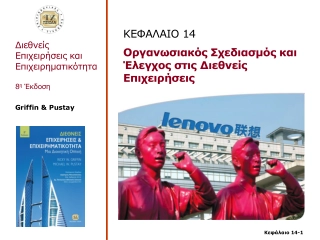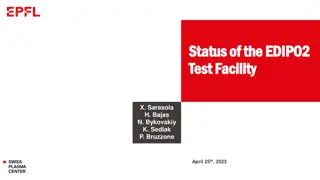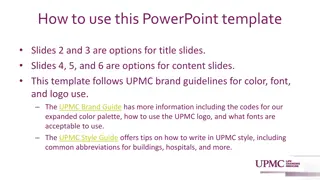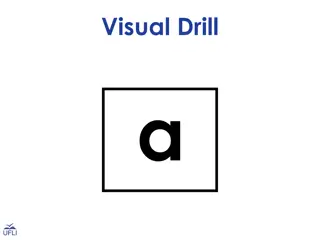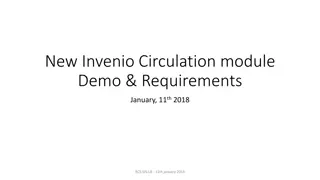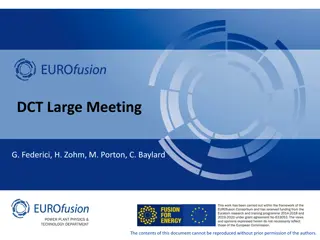
Understanding Magnetism and Ferrofluid Demonstrations
Explore the fascinating world of magnets, magnetic fields, and ferrofluid with demonstrations and explanations. Learn about dipoles, pairs of dipoles, and the principle of minimum energy in this informative content. Discover how magnetic fields behave, attract, and cancel out in various configurations.
Uploaded on | 0 Views
Download Presentation

Please find below an Image/Link to download the presentation.
The content on the website is provided AS IS for your information and personal use only. It may not be sold, licensed, or shared on other websites without obtaining consent from the author. If you encounter any issues during the download, it is possible that the publisher has removed the file from their server.
You are allowed to download the files provided on this website for personal or commercial use, subject to the condition that they are used lawfully. All files are the property of their respective owners.
The content on the website is provided AS IS for your information and personal use only. It may not be sold, licensed, or shared on other websites without obtaining consent from the author.
E N D
Presentation Transcript
Ferrofluid and Magnetism Ferrofluid and Magnetism A demonstration! James Ward, PHYS 420 Fall 2019
Magnets Magnets - How do we define a magnet? - Magnets attract and repel other magnets - Magnets stick to some (but not all substances) - Are these substances magnets? Can we predict what substances will attract a magnet?
A magnetic field A magnetic field We can visualize a magnetic field by drawing field lines: Here are some rules for dipole fields: - - Field Lines form complete loops, and don t cross Field Lines form complete loops, and don t cross - - Field Lines go from N to S outside the magnets, and from S to N Field Lines go from N to S outside the magnets, and from S to N inside the bar inside the bar - - Field Lines like to spread out as much as possible Field Lines like to spread out as much as possible - -The number of lines corresponds to the strength The number of lines corresponds to the strength for simplicity, we have 4 lines per magnet have 4 lines per magnet for simplicity, we
Dipoles Dipoles - The field of a single dipole with field strength indicated
Pairs of Dipoles Pairs of Dipoles fields cancelling and adding fields cancelling and adding Parallel Dipoles Doubled Field Anti-Parallel Dipoles Tiny Field
Principle of Minimum Energy Principle of Minimum Energy - A fundamental physics principle: Systems tend to minimum energy - A bigger field is a higher energy configuration A bigger field is a higher energy configuration so smaller fields are favored. As before, field strength is proportional to the number of favored. As before, field strength is proportional to the number of field lines. field lines. - Given this, how do two dipoles prefer to be arranged? Given this, how do two dipoles prefer to be arranged? - How about an arrangement of 3 dipoles, or 4? How about an arrangement of 3 dipoles, or 4? so smaller fields are
Dipoles like to form opposing pairs! Dipoles like to form opposing pairs! - - When dipoles form pairs, with their magnetic moments pointing When dipoles form pairs, with their magnetic moments pointing in opposite directions, their fields cancel out. in opposite directions, their fields cancel out. - - A useful metaphor is labeling the ends of a dipole North and A useful metaphor is labeling the ends of a dipole North and South and claiming north attracts south. South and claiming north attracts south. - - But why does this matter? Why Dipoles? But why does this matter? Why Dipoles?
Electrons Electrons Every electron in every atom has an intrinsic dipole field So, naturally, electrons want to pair up! Remember chemistry? - -Electrons form pairs in opposing Electrons form pairs in opposing directions, and these pairs have no net field directions, and these pairs have no net field anymore. anymore. - - Some atoms, such as iron, have unpaired Some atoms, such as iron, have unpaired electrons though. Their fields roughly electrons though. Their fields roughly cancel too. cancel too.
Magnetization Magnetization There is another important effect: - - In the presence of a strong external magnetic field, a dipole prefers In the presence of a strong external magnetic field, a dipole prefers to line up with that field. to line up with that field. - - If we put stick some atoms in a strong field, all the electrons will If we put stick some atoms in a strong field, all the electrons will want to line up with the field. want to line up with the field. - - The electrons should combine, as dipoles do, to create a really The electrons should combine, as dipoles do, to create a really strong magnetic field! This is induced magnetization. strong magnetic field! This is induced magnetization.
A balance of forces: paramagnetism A balance of forces: paramagnetism So, under a strong external field, we have a tug of war: - - Dipole Dipole- -dipole interactions want to make the dipoles point in dipole interactions want to make the dipoles point in opposite directions,Induced magnetization wants all the dipoles to opposite directions,Induced magnetization wants all the dipoles to line up line up - - Normally, the dipole Normally, the dipole- -dipole effect wins, and the induced dipole effect wins, and the induced magnetization is tiny. magnetization is tiny. - - This is paramagnetism, Most things work like this. This is paramagnetism, Most things work like this.
Ferromagnetism: The Exchange Interaction Ferromagnetism: The Exchange Interaction But what about the metal stand? - - There is one more effect that comes into play, in some situations. There is one more effect that comes into play, in some situations. - - This occurs only in crystal structures with some atoms (Iron, Nickel, This occurs only in crystal structures with some atoms (Iron, Nickel, Cobalt + Some Rare Earths). Cobalt + Some Rare Earths). - - The solid structure causes unpaired electrons near each other to The solid structure causes unpaired electrons near each other to prefer to line up. This is due to quantum mechanics. prefer to line up. This is due to quantum mechanics. We call this Ferromagnetism! We call this Ferromagnetism!
Ferromagnetism: Domains Ferromagnetism: Domains Since electrons near each other want to align, they form regions of lined up dipoles in the solid called domains - - A strong enough external field will cause the domains to merge into A strong enough external field will cause the domains to merge into one single alignment one single alignment - - In permanent magnets, the domains have stuck into being aligned In permanent magnets, the domains have stuck into being aligned mostly in the same direction (which can be changed!) mostly in the same direction (which can be changed!) AND THAT IS HOW MAGNETS WORK!
A ferromagnetic fluid? A ferromagnetic fluid? Could we have a stable ferromagnetic fluid? Why or why not? Remember what needs to happen: - - To support the exchange interaction, need to have a careful crystal To support the exchange interaction, need to have a careful crystal structure structure - - A stable fluid should remain a liquid and not settle out of solution A stable fluid should remain a liquid and not settle out of solution
Normal fluid instability Normal fluid instability How about those spikes? These are called a normal field instabiliy. Any hypothesis as to why? - - Gravity wants the fluid to stay low. Higher means higher Gravity wants the fluid to stay low. Higher means higher gravitational energy. gravitational energy. - - Surface Tension: surface tension wants the surface to stay Surface Tension: surface tension wants the surface to stay smooth smooth However However the fluid wants to move towards the region of highest flux. Once again, minimizing energy, and there are a balance of forces: Once again, minimizing energy, and there are a balance of forces:
Normal fluid instability: Flux Normal fluid instability: Flux What is flux? Flux is the density of field lines in a certain area. Clearly, near a magnet, the flux is the highest, so the fluid will try to move there. - - The field is deflected through all the tiny particles of iron the fluid. The field is deflected through all the tiny particles of iron the fluid. - - The fluid creates little pockets of high flux, and so the fluid tries to The fluid creates little pockets of high flux, and so the fluid tries to move on top of itself, in a feedback loop. move on top of itself, in a feedback loop. - - If it could, the fluid would climb into the air along the dense field it If it could, the fluid would climb into the air along the dense field it creates, but is eventually stopped by gravity and surface tension creates, but is eventually stopped by gravity and surface tension
Fluid leaps into the air, towards the solenoid Fluid leaps into the air, towards the solenoid Why is the fluid attracted into the air? solenoid eventually outweighs the restraint of gravity and surface solenoid eventually outweighs the restraint of gravity and surface tension. tension. - - Then, the fluid can climb up toward the solenoid, and once it does, Then, the fluid can climb up toward the solenoid, and once it does, surface tension can actually help keep it there, even at lower field surface tension can actually help keep it there, even at lower field strength. strength. - - Notice how surface tension creates the roundest smoothest Notice how surface tension creates the roundest smoothest possible shape here possible shape here - - Once the field from the coil is strong enough, the high flux of the Once the field from the coil is strong enough, the high flux of the
Labyrinth Patterns: Photos I found online Labyrinth Patterns: Photos I found online
The end! The end! Thanks everyone for listening! I hope everyone finds Ferrofluid and magnetism as exciting and fascinating as I do. Feedback is strongly appreciated, of course.

